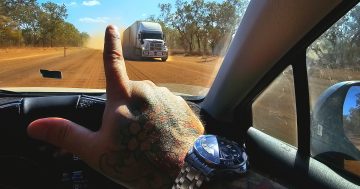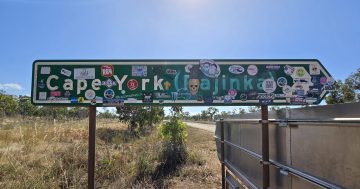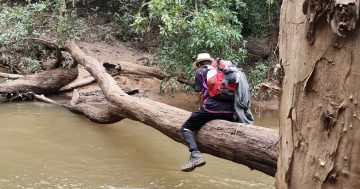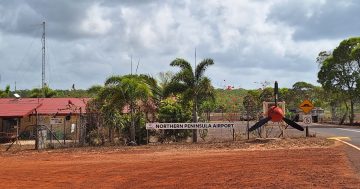
While there are not many ways for Google Maps to get it wrong on the road from Bamaga to Pajinka, the same cannot be said for other spots around Cape York. Photo: Lyndon Keane.
Year in Review: Region is revisiting some of the best Opinion articles of 2024. Here’s what got you talking, got you angry and got you thinking this year. Today, Lyndon Keane drives home some navigational concerns.
There comes a time in every driver’s life when they just have to fess up and admit they got it wrong with directions.
We’ve all been there. Misreading a road sign. Accidentally holding the map upside down. Being consumed by a 90s power ballad singalong and briefly mistaking your left for your right. Or simply being too proud – read this as stubborn or stupid, if you prefer – to ask which way you need to go.
That embarrassing moment arrives for all of us at some stage. Except if you’re a global tech giant approaching a market capitalisation of nearly $3 trillion, it seems.
I’m going to put a caveat on the rambling and finger-pointing that follows by saying I recognise drivers are ultimately responsible for their decisions and actions on the road.
I’m the first to admit some just should not be allowed behind the wheel, whether they be the muppets who insist on travelling 20 kilometres per hour under the gazetted speed limit, or those perennial tourist season favourites, the ones attempting a U-turn on a narrow road while towing a 24-foot caravan. The geniuses who try to traverse flooded roads finish strongly to claim bronze in this race for road stupidity superiority.
But the unavoidable reality is that Australia is a big place with myriad roads crisscrossing it and, in a digital age, most of us now rely on navigation apps to plot our course from A to B, whether it’s through suburbs in Brisbane, or over some of the most remote terrain on Cape York. I’m looking at you, Google Maps.
Sometimes, the mapping gods get it horribly wrong, as was the case last week, when two German tourists spent a week extracting themselves from bushland after Google Maps sent them through a closed national park under the guise of being a legitimate alternative route to the flooded Archer River crossing on the Peninsula Developmental Road.
The problem for the visitors – and for Google Maps – was that the boggy path their mobile phones proffered through Oyala Thumotang National Park was as impassable as the route they were trying to avoid.
Yes, the lads should have asked Coen locals what their chances of getting beyond the town during the wet season actually were, but at some stage, Google Maps has to admit it is complicit in these navigation disasters, because its technology is simply not up to the task of providing reliable advice for regional and remote roads.
The tech giant certainly isn’t in a rush to amend its wayward approach to navigation: at the time of writing this editorial, Google Maps still shows drivers they can get from Coen to Bamaga up a boggy dirt track with enough water crossings to deter even the Leyland brothers in their prime.
Unfortunately, unusable directions are becoming more commonplace as drivers put their faith in navigation apps like Google Maps.
In late 2023, central Queensland grazier Graham Anderson dug into his own pocket to install a sign at the entrance to his property to help confused tourists find the stunning Isla Gorge, about 20km farther along the Leichhardt Highway than Google Maps was telling drivers the turnoff was.
Twenty kilometres is a fair distance to be wrong by on city roads. On remote roads, where mobile phone reception can be intermittent at best, it can be the difference between life and death if anything goes wrong.
Cape York Weekly contacted Google to flag the redirect drama, and I’m not expecting a response much before hovercars become the go-to in transport trends.
We’ve all had to own up to a directional miscalculation, and it’s tough to hide your error when you’ve been handed the Gregory’s (yes, I’m that old) for the first time to navigate your family’s course to Christmas holidays, only to direct the driver into three lanes of oncoming traffic because you were moving your finger along the wrong street on the page.
It’s time for Google to do the same, and own up to sending remote travellers on a corrugated road to nowhere with its current navigation technology.
It will be an immensely easier admission to make than having to acknowledge corporate reluctance and arrogance plotted an erroneous one-way route all the local knowledge and recovery kits in the world won’t be able to fix.

Google Maps has form for sending drivers on a wild goose chase across regional Australia, so why won’t the tech giant admit its platform lacks the capacity to cater for provide accurate navigation in remote areas? Photo: Lyndon Keane.











